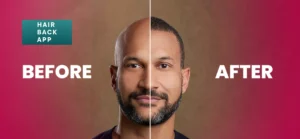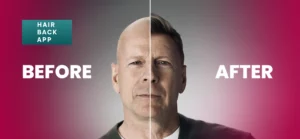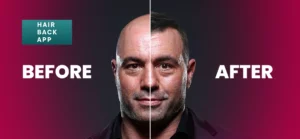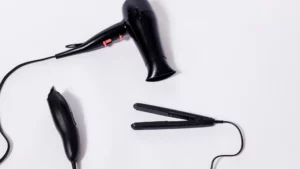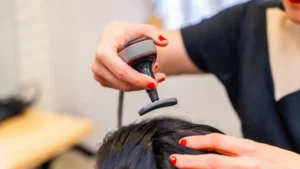Hair transplant procedures involve the surgical relocation of hair follicles from one part of the body, typically the back or sides of the scalp where hair is more resistant to balding, to areas experiencing thinning or baldness.
Among the various techniques available, two primary methods stand out: Follicular Unit Transplantation (FUT) and Follicular Unit Extraction (FUE).
My name is Emma Wright, and I am deeply passionate about helping individuals navigate the complexities of hair loss and hair restoration. With years of experience as a hair loss and hair restoration consultant, I have chosen to educate you on the intricacies and differences between FUE and FUT.
Understanding the nuances and disparities between FUT and FUE, as efficient hair loss treatments, is crucial for individuals contemplating hair restoration surgery. While both procedures aim to achieve the same outcome – the revitalization of a fuller, natural-looking head of hair – their approaches, techniques, and results can vary significantly.
In this comprehensive guide, we will explore the intricacies of both FUT and FUE hair transplant procedures, shedding light on their respective processes, advantages, and limitations.
At the end of this article, readers will gain a deeper understanding of these techniques, empowering them to embark on their hair restoration journey with confidence and clarity.
What is FUT (Follicular Unit Transplantation)?
Follicular Unit Transplantation (FUT) is a hair transplant procedure that involves harvesting a strip of tissue from the donor area, typically the back or sides of the scalp, and then dissecting it into individual follicular units for transplantation.
This technique is often referred to as the “strip method” due to the linear strip of scalp tissue that is removed during the procedure.
The FUT procedure begins with the surgeon numbing the donor area with local anesthesia to minimize discomfort. Once the area is numb, a thin strip of scalp tissue containing hair follicles is carefully excised from the donor site.
The incision is then closed with sutures or staples, leaving behind a fine linear scar that is typically concealed by surrounding hair. Next, the harvested strip of tissue is dissected under a microscope into individual follicular units, which consist of one to four hair follicles each.
These follicular units are meticulously prepared for transplantation, ensuring that they remain intact and viable throughout the process. Once the recipient sites have been prepared, typically through small incisions or needle punctures in the recipient area, the follicular units are meticulously implanted into the bald or thinning areas of the scalp.
The surgeon strategically places the follicular units to achieve a natural-looking distribution of hair, taking into account factors such as hairline design, hair density, and hair direction.
Advantages of FUT
- High graft yield: FUT allows for the extraction of a large number of grafts in a single session, making it ideal for individuals requiring extensive hair restoration.
- Cost-effectiveness: Since FUT involves harvesting a single strip of tissue, it can be a more cost-effective option compared to other hair transplant techniques.
- Long-term results: FUT typically yields long-lasting results, with transplanted hair follicles retaining their natural growth characteristics over time.
Disadvantages of FUT
- Linear scar: The most significant drawback of FUT is the linear scar left behind at the donor site. While efforts are made to minimize scarring, some individuals may be concerned about the visibility of the scar, particularly if they prefer shorter hairstyles. And, it may result in swelling after hair transplant is done.
- Longer recovery time: The FUT procedure involves a longer recovery period compared to other hair transplant techniques, primarily due to the need for suture removal and the healing of the donor site incision.
- Potential for numbness or discomfort: Some patients may experience temporary numbness or discomfort in the donor area following FUT surgery, although these symptoms typically resolve within a few weeks.
What is FUE (Follicular Unit Extraction)?
Follicular Unit Extraction (FUE hair transplant) is a minimally invasive hair transplant procedure that involves the extraction of individual follicular units directly from the donor area, typically the back or sides of the scalp, using a specialized extraction tool.
Unlike FUT, which involves removing a strip of tissue from the donor area, FUE allows for the extraction of individual follicular units without the need for linear incisions.
The FUE procedure begins with the administration of local anesthesia to the donor area to ensure patient comfort during the extraction process. Once the donor area is numb, the surgeon utilizes a small, circular punch tool to extract individual follicular units from the scalp.
These follicular units are carefully harvested one by one, leaving behind tiny, dot-like scars that are barely visible to the naked eye.
After the follicular units have been extracted, they are meticulously prepared for transplantation. This involves sorting and examining the follicular units under a microscope to ensure their integrity and viability.
The recipient sites, where the transplanted hair will be placed, are then prepared by making small incisions or punctures in the recipient area, guided by the patient’s desired hairline and aesthetic goals.
Once the recipient sites have been prepared, the extracted follicular units are carefully implanted into the recipient area using specialized instruments. The surgeon strategically places the follicular units to achieve natural-looking hair density and distribution, taking into account factors such as hairline design, hair direction, and existing hair patterns.

Advantages of FUE
- Minimal scarring: One of the primary advantages of FUE is its minimal scarring compared to traditional FUT procedures. Since FUE involves the extraction of individual follicular units, the resulting scars are tiny dot-like marks that are easily concealed by surrounding hair, making FUE a preferred option for individuals who prefer shorter hairstyles or wear their hair cropped close to the scalp.
- Faster recovery time: FUE typically involves a shorter recovery period compared to FUT, as there are no linear incisions or sutures involved. Patients undergoing FUE can typically resume their normal activities within a few days of the procedure, with minimal discomfort and downtime.
- Versatility: FUE allows for greater flexibility and precision in hair transplantation, as it enables the selective extraction of follicular units from the donor area. This makes FUE suitable for individuals with limited donor hair or those requiring touch-up procedures to enhance the results of previous hair transplant surgeries.
Disadvantages of FUE
- Limited graft yield: FUE may yield fewer grafts compared to FUT, particularly in cases where extensive hair restoration is needed. However, advancements in FUE techniques and technology have helped improve graft yield and minimize this limitation.
- Longer procedure time: FUE procedures may take longer to perform compared to FUT, as the extraction of individual follicular units requires meticulous precision and attention to detail. However, the duration of the procedure can vary depending on the size of the treatment area and the number of grafts being transplanted.
- Higher cost: FUE procedures may be more expensive than FUT due to the specialized equipment and labor-intensive nature of the technique. However, the cost of FUE can vary depending on factors such as the clinic’s location, the surgeon’s expertise, and the extent of the procedure.
5 Key Differences Between FUT and FUE
| Key Differences | FUT (Follicular Unit Transplantation) | FUE (Follicular Unit Extraction) |
| Extraction Method | Involves the excision of a strip of scalp tissue followed by dissection into individual follicular units | Involves direct extraction of individual follicular units using a specialized punch tool |
| Scarring | Leaves a linear scar at the donor site, which may be visible, particularly with shorter hairstyles | Leaves tiny, dot-like scars scattered throughout the donor area, easily concealed by surrounding hair |
| Recovery Time | Longer recovery time due to the need for suture removal and healing of the donor area incision | Shorter recovery time with minimal downtime, no need for suture removal or healing of linear incisions |
| Suitability for Different Hair Types and Conditions | Suitable for individuals with all hair types and conditions, including extensive hair loss | Suitable for individuals with all hair types and conditions, particularly those concerned about visible scarring |
| Cost Comparison | May be more cost-effective due to less time and resources required | May be more expensive due to specialized equipment and the labor-intensive nature of the technique |
Factors to Consider When Choosing Between FUT and FUE
When deciding between FUT (Follicular Unit Transplantation) and FUE (Follicular Unit Extraction) for your hair transplant procedure, several important factors should be taken into consideration.
These factors can help you make an informed decision that aligns with your personal preferences, hair loss severity, desired outcome, and expert recommendations.
1. Personal Preferences
Your personal preferences play a significant role in determining which hair transplant technique is best suited for you. Consider factors such as your tolerance for scarring, recovery time, and the length of your hair.
If you prefer shorter hairstyles and are concerned about visible scarring, FUE may be the preferred option due to its minimal scarring and shorter recovery time. On the other hand, if you are not bothered by the prospect of a linear scar and prioritize cost-effectiveness, FUT may be a suitable choice.
2. Hair Loss Severity
The severity of your hair loss is another crucial factor to consider when choosing between FUT and FUE. FUT is generally recommended for individuals with extensive hair loss or those requiring a larger number of grafts, as it allows for the extraction of a higher graft yield in a single session.
Conversely, FUE may be more suitable for individuals with mild to moderate hair loss or those seeking touch-up procedures, as it offers greater flexibility in extracting individual follicular units.
3. Desired Outcome
Your desired outcome for the hair transplant procedure should also guide your decision between FUT and FUE. Consider factors such as the naturalness of the results, hairline design, and overall aesthetic goals.
Both FUT and FUE can deliver natural-looking results when performed by skilled surgeons, but each technique may offer unique advantages depending on your specific preferences and goals. Discuss your desired outcome with your surgeon to determine which technique aligns best with your expectations.
4. Expert Recommendation
Seeking expert advice from a qualified hair transplant surgeon is essential when choosing between FUT and FUE. A knowledgeable and experienced surgeon can assess your individual case, including factors such as the cause of hair loss, donor hair availability, scalp laxity, and previous hair transplant surgeries, to provide personalized recommendations tailored to your needs.
Your surgeon can also discuss the advantages and limitations of each technique, helping you weigh the potential risks and benefits before making a decision.
When choosing between FUT and FUE for your hair transplant procedure, it’s important to consider your personal preferences, hair loss severity, desired outcome, and expert recommendations. By carefully evaluating these factors and discussing them with your surgeon, you can make an informed decision that leads to successful and satisfying results.
Conclusion
Making the decision to undergo hair transplant surgery is a significant step towards restoring your hair and confidence. By carefully considering factors such as personal preferences, hair loss severity, desired outcomes, and expert recommendations, you can make an informed decision that leads to successful and satisfying results.
Whether you choose FUT or FUE, the key is to research your options thoroughly, ask questions, and trust in the expertise of your chosen surgeon. With the guidance of a qualified professional, you can embark on your hair restoration journey with confidence and peace of mind, knowing that you are in capable hands.



